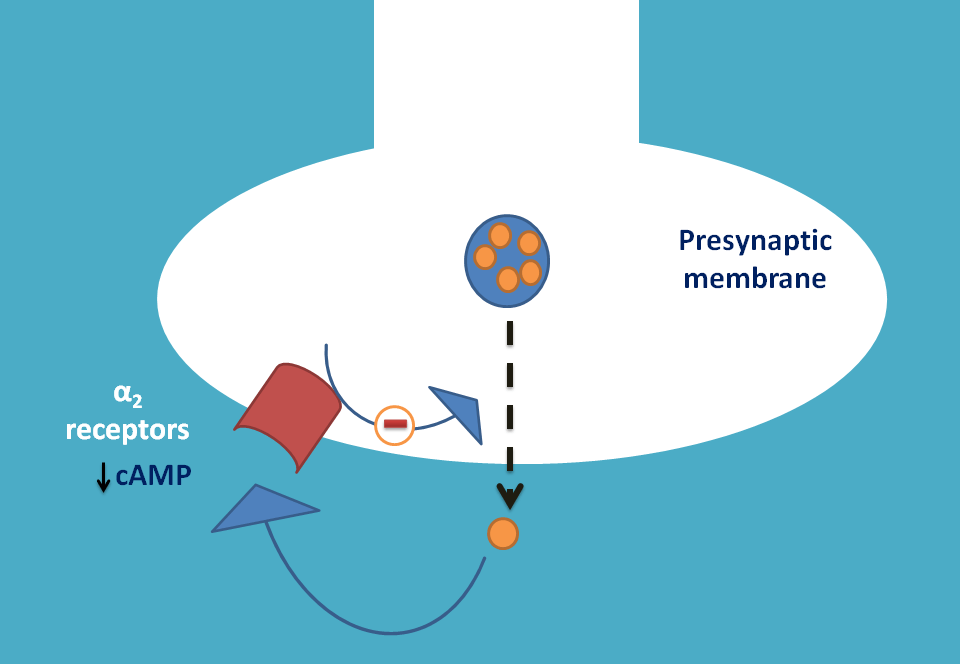Neurotransmitter
We have discussed that entire communication whether sensory or motor impulses are conducted by well organised nervous system. But how can they produce effect at the end organ? Even, how this electrical signal can be passed at the ganglia where there is no direct contact of two neurons?
Fortunately, our physiological system has a capability of converting this electrical signal into chemical signal through release of neurotransmitters.
Neurotransmitter is a chemical mediator released from the neuron by depolarisation of the nerve terminal and acts at postsynaptic membrane to produces physiological response. In a simple way it converts the electrical signal to chemical signal and passes the information to the target organ.

Acetylcholine is the neurotransmitter in parasympathetic system and norepinephrine at most of sympathetic nerve endings.
Similarly, other mediators like glutamate, GABA, glycine, dopamine and serotonin are important neurotransmitters within the CNS.
A chemical mediator can act as neurotransmitter within and outside the CNS. For instance, acetylcholine and norepinephrine are neurotransmitters both in the CNS and periphery.
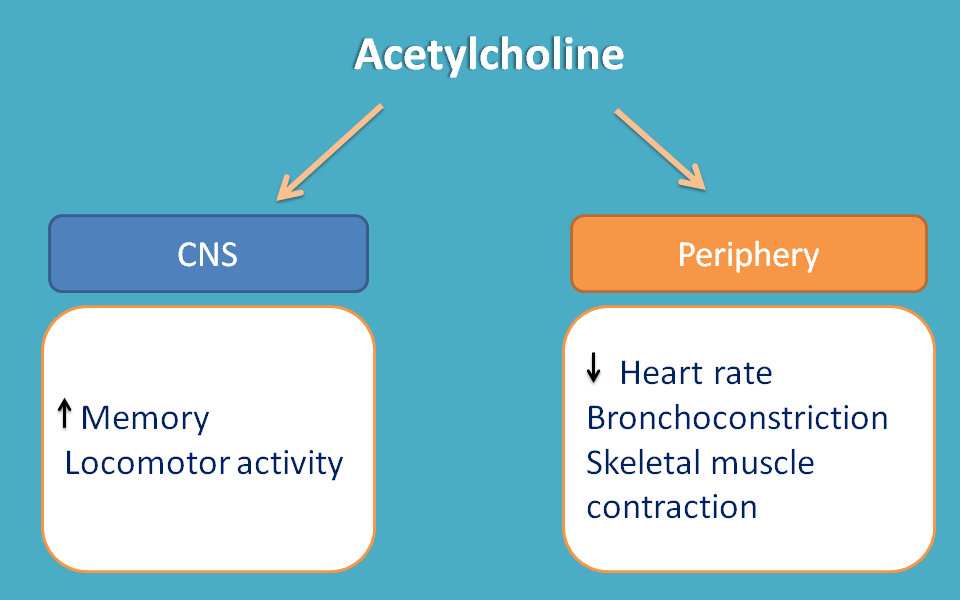
Is adrenaline a neurotransmitter?
It is very important to note that few of the chemical mediators are released from glands into the blood stream but not released from neurons. These mediators are called as endocrine hormones. Adrenaline is such a hormone released from adrenal medulla by sympathetic stimulation. Even we can observe few other mediators which are released locally from specialised cells and they are called as local hormones. Histamine is such a mediator that is locally released from mast cells
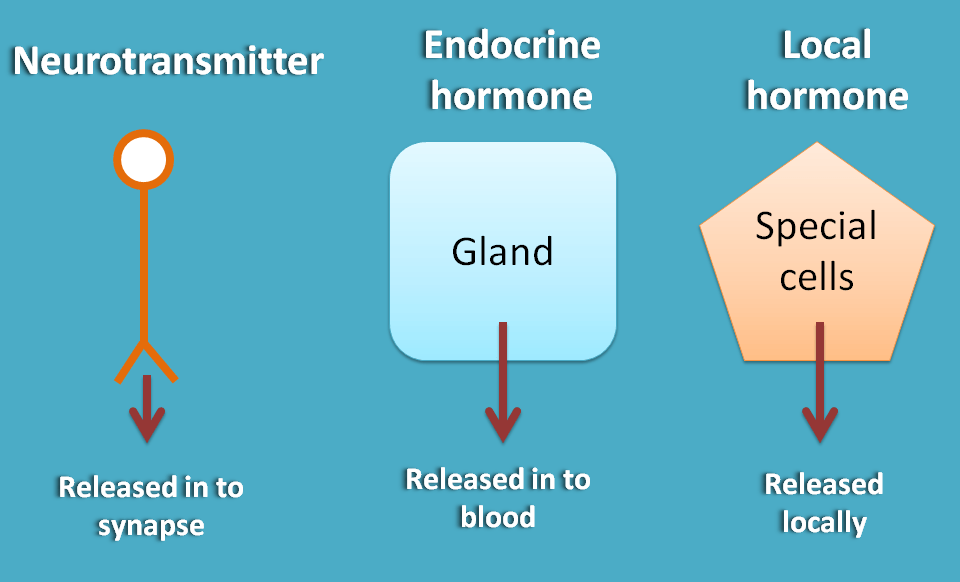
Postsynaptic response
A neurotransmitter is released at synapse to propagate electrical signal but how it can produce postsynaptic response?
So something should be there again to convert this chemical signal to electrical signal. These are nothing but receptors. Receptors present on the postsynaptic membrane are activated by these neurotransmitters and produce postsynaptic response by various methods like opening of ion channels, activation of enzymes or any other mechanism.
These receptors are specific to each neurotransmitter and may produce fast or slow, excitatory or inhibitory postsynaptic response. For example, acetylcholine acts on nicotinic and muscarinic acetylcholine receptors. The former are fast acting while later are slow acting.
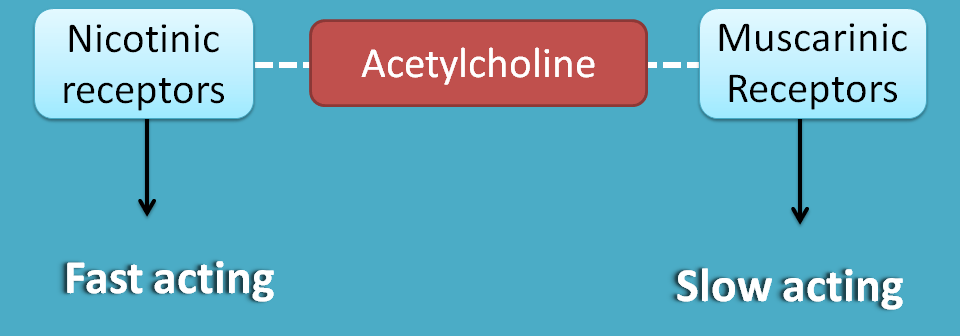
Similarly, glutamate is an excitatory neurotransmitter in the CNS whereas GABA and glycine are inhibitory in nature producing postsynaptic inhibition.
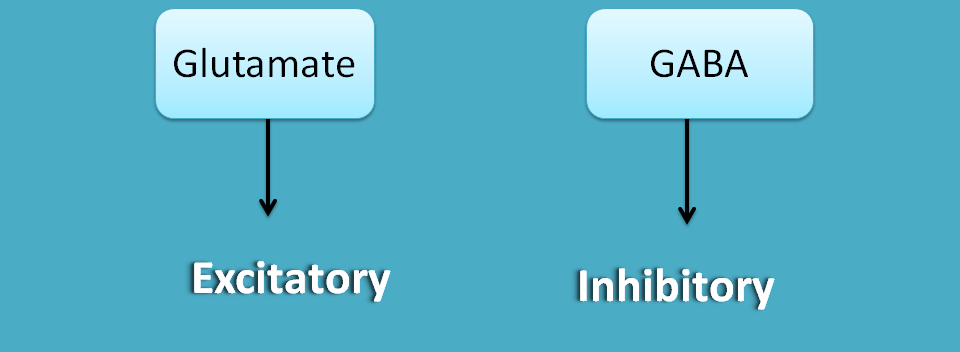
Presynaptic response
Is the role of neurotransmitter confined to postsynaptic membrane only?
Certainly, it is not always. Most of the neurotransmitters act on postsynaptic membrane, but at few of the neurons they may also act at presynaptic receptors to modulate the release of neurotransmitters.
They may act on presynaptic receptors either to increase or decrease their own release. Since they are affecting their own release from presynaptic nerve terminals they are called as either autostimulatory or autoinhibitory based on an increase or decrease in release respectively.
For instance, at few of adrenergic neurons β2 receptors are present which are autostimulatory in nature and when activated by norepinephrine they further increase their release.
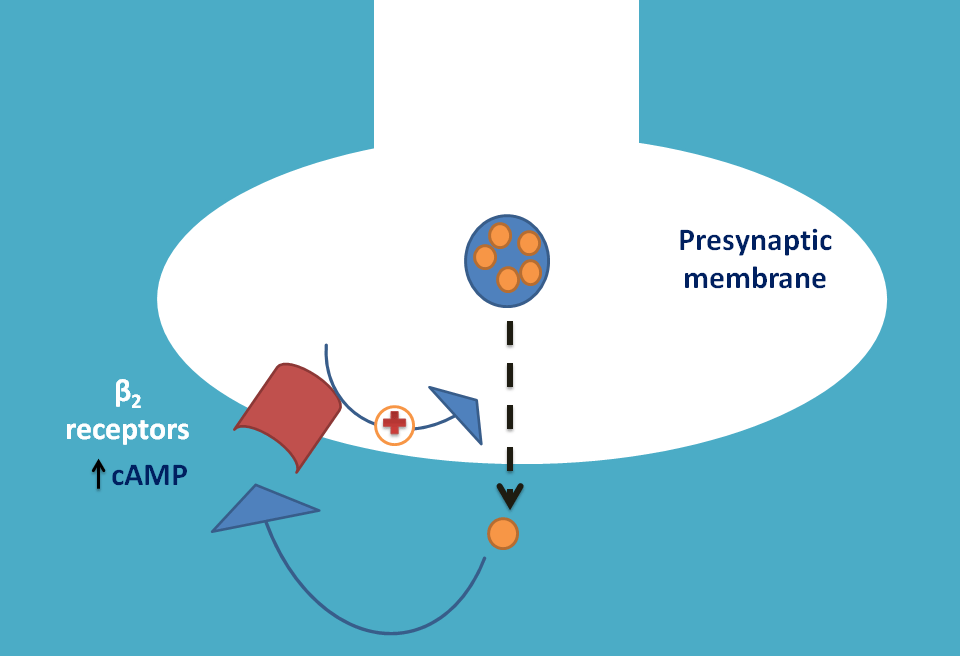
Similarly, α2 receptors are also present at adrenergic neurons and cholinergic neurons in the CNS that inhibit the release of norepinephrine and acetylcholine respectively.
